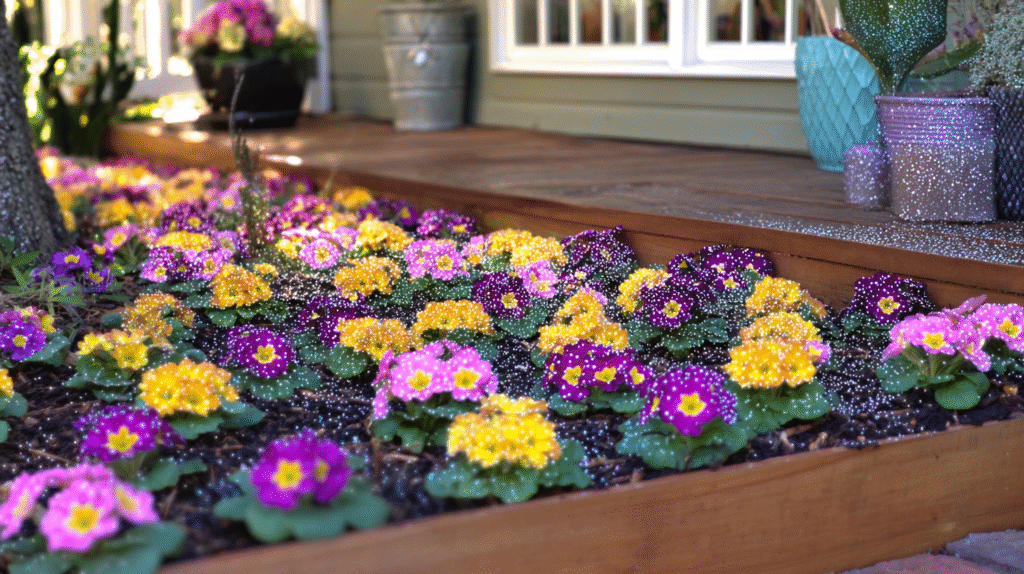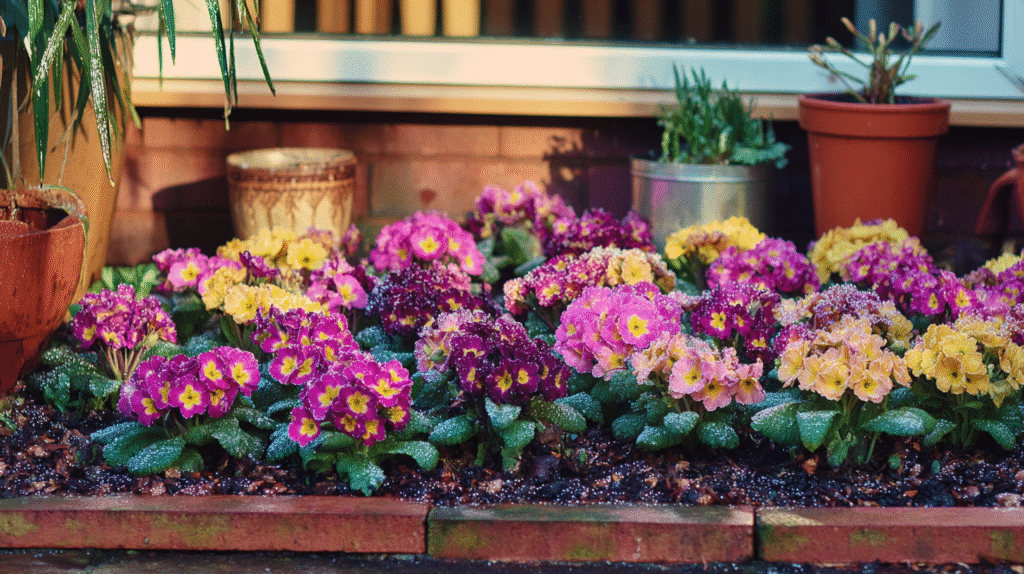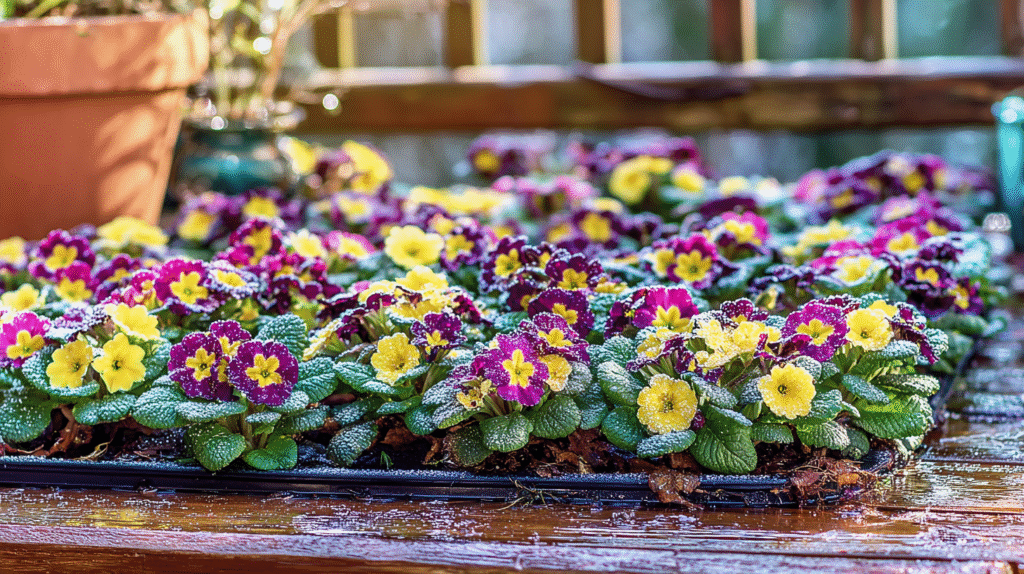My primrose graveyard was getting embarrassing. Every spring, I’d fall for those cheerful faces at the garden center — bright yellows, hot pinks, deep purples with sunny centers. Two weeks later? Crispy leaves, droopy flowers, another one for the compost bin.
“They’re so easy!” everyone said. “Perfect for beginners!” they promised. Meanwhile, I was on primrose number seven, watching it die the exact same death as its predecessors. Turns out, primroses are easy… if you understand their one weird trick. And nobody was telling me what that was.
Fast forward two years, and my primroses are now the stars of my spring garden. They bloom for months, come back every year, and people actually ask me for advice. Me! The former primrose serial killer! Here’s everything I wish someone had told me from the start.

The Big Secret Nobody Mentions
Here’s the thing that changed everything: primroses hate heat. Like, absolutely despise it. They’re not summer flowers pretending to be spring flowers. They’re cool-weather plants that literally shut down when temps hit 70°F.
I kept trying to grow them like petunias or marigolds. Sunny spot, regular watering, waiting for summer blooms. Wrong, wrong, wrong. Once I understood they’re basically the opposite of most flowers, everything clicked.
Think of primroses like that friend who wears shorts in 50-degree weather but melts at the first sign of summer. That’s your primrose. Respect their temperature tantrums, and they’ll bloom their faces off.
Where to Plant Them (Hint: Not Where You Think)
Every tag says “partial shade,” but that’s only half the story. Here’s what actually works:
Spring placement: They can handle more sun when it’s cool. That east-facing spot that gets gentle morning sun? Perfect for March and April.
Summer survival mode: By June, they need serious shade. Like, north side of the house shade. Under a tree shade. Anywhere that stays cool and dim.
My game-changer was planting them where my hostas go. Seems wrong to put flowering plants in shade, but primroses aren’t normal flowering plants. They’re weirdos. Embrace it.
The container trick: Can’t find the perfect spot? Use pots. I move mine around like furniture — sunny spots in early spring, shadier as temps rise. By July, they’re chilling on my covered porch like they’re in witness protection.
Watering: More Dramatic Than You’d Expect
Primroses are thirsty. Like, really thirsty. But also prone to root rot. Because of course they are.
Here’s what I learned after drowning several:
- They want consistently moist soil (not soggy, not dry, just… moist)
- Check them daily in spring when they’re blooming hard
- Mulch is your friend — keeps roots cool and moist
- Water at soil level, not on leaves (they get pouty about wet foliage)
My test? Stick your finger in the soil. Should feel like a wrung-out sponge. Too wet? Dead primrose. Too dry? Also dead primrose. They’re the Goldilocks of the flower world.
The morning water rule: Water early in the day. Wet primroses at night = fungus party. Learned this after losing two to some gross leaf spot situation.
Soil Secrets That Saved My Primroses
Regular potting soil? Nope. Heavy clay? Death sentence. Sandy soil? They’ll be constantly thirsty.
What actually works:
- Rich, organic soil (think forest floor)
- Holds moisture but drains well
- Slightly acidic is bonus points
- Add compost like your life depends on it
I amend my primrose beds with:
- Compost (lots)
- Peat moss (helps with moisture and acidity)
- A bit of aged manure if I’m feeling fancy
- Mulch on top always
The difference between primroses in good soil vs. bad is like comparing a sports car to a broken tricycle. Don’t skimp on the soil prep.
The Feeding Schedule That Actually Works
First year: Didn’t feed them. They were okay. Second year: Fed them weekly. They got huge leaves, no flowers. Third year: Finally got it right.
Early spring (when growth starts): Half-strength liquid fertilizer every two weeks. Gets them pumped for blooming.
During bloom: Nothing. Let them do their thing.
After blooming: One feeding to help them store energy for next year.
Summer: They’re dormant-ish. Leave them alone.
That’s it. Not complicated, just specific timing. Like everything with primroses — it’s all about understanding their rhythm.
Common Primrose Problems (AKA My Hall of Shame)
Crispy leaves: Too hot, too sunny, or both. Move to shade immediately. Might bounce back if you’re quick.
Yellow leaves: Usually overwatering. Sometimes underfed. Check soil first, always.
No flowers: Either too much nitrogen (ease up on fertilizer) or they’re unhappy with their spot. Also, some need cold winters to bloom well.
Leggy, stretched growth: Not enough light. Yes, they want shade, but not a cave. Bright shade is the goal.
Powdery mildew: Air circulation sucks or you’re watering the leaves. Space them out, water the soil only.
Deadheading: The Tedious Task That’s Actually Worth It
Nobody likes deadheading. It’s boring, your back hurts, and there’s always one more dead flower hiding somewhere. But with primroses? Game-changer.
Pinch off spent blooms regularly and they’ll keep pushing new flowers for weeks longer. Skip it and they’re done in half the time. I deadhead while having morning coffee — makes it feel less like a chore.
Pro tip: Don’t just pop the flower off. Pinch the whole stem down to the base. Cleaner look and prevents rot.
The Post-Bloom Period (When Most People Give Up)
Here’s where I kept failing: primroses don’t die after blooming. They just… rest. And they look terrible while resting.
What to do:
- Keep watering (less than during bloom but don’t let them dry out)
- Leave the leaves alone (they’re feeding next year’s flowers)
- Move containers to full shade
- Basically ignore them but keep them alive
Come fall, they’ll perk up again. Next spring? Boom. More flowers. This is how you get those massive, established clumps that make neighbors jealous.

Varieties That Actually Survived My Learning Curve
English Primrose (P. vulgaris): The classic. Hardy, comes back every year. Yellow ones seem toughest.
Polyanthus Primrose: The fancy multicolored ones. Bit more tender but worth it for the color range.
Japanese Primrose: For wet spots. Literally thrives in bog conditions. Different care needs but spectacular.
Drumstick Primrose: Weird ball-shaped flowers on stems. Later blooming, handles more heat. Good for extending primrose season.
Start with English primroses. Once you can keep those alive, branch out.
My Current Primrose Success Setup
After all my failures, here’s what works:
The shady border: Under my oak tree, gets morning sun only. Amended soil, thick mulch. English primroses have formed massive clumps here.
The container collection: Six pots I shuffle around based on weather. Currently living on the covered porch for summer.
The bog garden: Okay, it’s just a low spot that stays wet, but Japanese primroses love it. Turned a problem area into a feature.
Why I’ll Never Give Up on Primroses Again
Yeah, they’re particular. Yes, they have specific needs. No, they’re not plant-and-forget flowers. But when those first blooms pop in February or March, when everything else is still dead-looking, when you’ve got cheerful faces smiling from every corner?
Totally worth learning their quirks.
My primrose journey went from serial killer to successful grower because I finally stopped trying to make them be something they’re not. They’re not summer annuals. They’re not sun lovers. They’re cool-weather, shade-needing, moisture-loving weirdos that bloom when nothing else will.
Embrace the weird. Give them what they want. And prepare for more spring color than you know what to do with. Just maybe start with one or two instead of seven. Learn from my expensive mistakes. Your wallet (and compost bin) will thank you. 🌸







